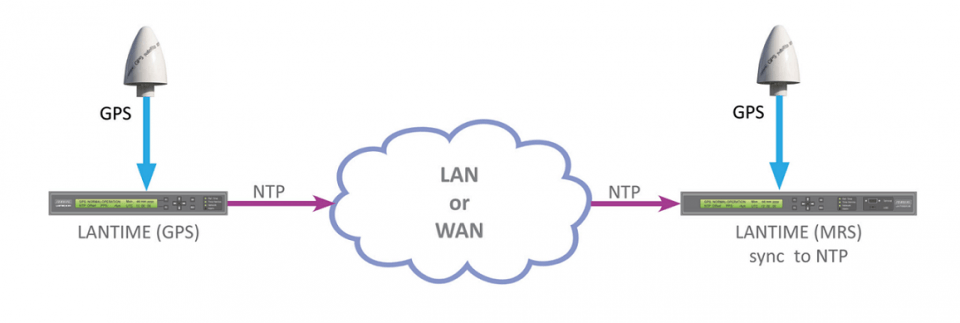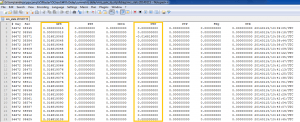By Andreja Jarc.
Finally good news on the subject of measuring asymmetric delays in LAN and WAN networks using packet timing technologies.
Meinberg Radioclocks provides a reliable solution for measuring asymmetry in NTP as well as IEEE 1588 PTP environments using a LANTIME server equipped with a Multi Reference Source (MRS) receiver. MRS is a special reference clock which can be synchronized not only by the usual reference signals such as GPS, GLONASS or long wave DCF77, but also by IRIG Time Codes, PPS, 10MHz, IEEE 1588 PTP and external NTP which was used as an input source in our example. The order of ref signals is defined by the user in a priority list stored in the MRS.
Moreover, an MRS includes a high quality oscillator with excellent holdover characteristics. In case that the current synchronization signal fails or gets lost, the internal oscillator runs forward in free run until the MRS switches in accordance with the IRSA (Intelligent Reference Signal Algorithm) to the next signal from the priority list.
 Figure 1: Suggested Meinberg setup with two LANTIMEs for measuring an asymmetric delay in the network.
Figure 1: Suggested Meinberg setup with two LANTIMEs for measuring an asymmetric delay in the network.
For delay measuring one may use a combination of Meinberg LANTIME/GPS as a server and a LANTIME/MRS system as a client. Both LANTIMEs were attached to a GPS signal; the first one for synchronization of its own reference clock and the second one for the later comparison with its system time. The measuring setup is shown in Figure 1.
The MRS device was configured to synchronize its ref clock by an external NTP, queried from the server through a network cloud where a known asymmetry of 30 µsec was purposely generated. The network cloud can in reality be any LAN or WAN network with an unknown asymmetry. After the MRS was disciplined by NTP the offset between its system time and GPS corresponds directly to half of the asymmetric delay in the network.
In MRS settings the NTP was entered as the first input signal in the priority list and GPS as the second (see Figure 2). Also the GPS time was continuously logged and used to estimate the offset with the NTP time. The priority list and MRS configuration can be set via LANTIME Webinterface V6: Receiver menu/ MRS- Settings.
Figure 2: The priority list of input ref signals available in LANTIME/MRS system.
We let our test run for 48 hours to make sure that the MRS receiver is synchronized to the external NTP within a desired accuracy. The offset data are continuously saved in the system diagnostic file under mrs_stats file. Data for each day are logged separately and saved as mrs_stats_yyyymmdd.
Figure 3: mrs_stats file in the LANTIME / MRS. Data in the GPS column represent offsets between GPS and NTP time. They correspond directly to a half of the asymmetry generated in the data link between the server and client (in our example 30 µsec).
The collected data are stored in mrs_stats separated by days. Prior to evaluation they are merged into a single file. Finally they are processed and depicted with Meinberg TCS32 software which is available here.
Figure 4: TCS32 v1.01 program used for statistical analysis and evaluation.
The accuracy of this measurement system is determined mainly by how well two GPS receivers agree on the time. This is typically on the order of tens of nanoseconds.
A similar LANTIME setup can be applied to measure asymmetric latency in IEEE 1588 PTP networks. For this purpose a LANTIME/GPS as Grandmaster and LANTIME/MRS as PTP slave can be used and configured accordingly.
For any further questions feel free to contact me at andreja.jarc@meinberg.de or check our Meinberg Web Page at: www.meinbergglobal.com.



If you enjoyed this post, or have any questions left, feel free to leave a comment or question below.